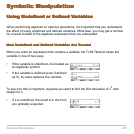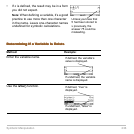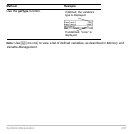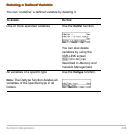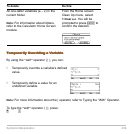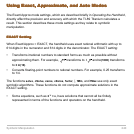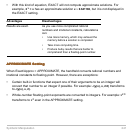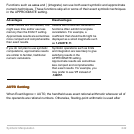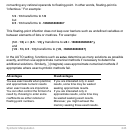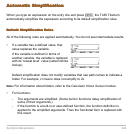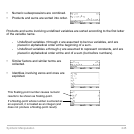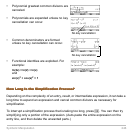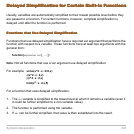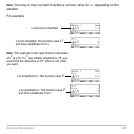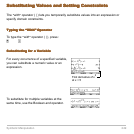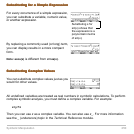
Symbolic Manipulation 243
converting any rational operands to floating-point. In other words, floating-point is
“infectious.” For example:
1/2 - 1/3 transforms to 1/6
but
0.5 - 1/3 transforms to .16666666666667
This floating-point infection does not leap over barriers such as undefined variables or
between elements of lists or matrices. For example:
(1/2 - 1/3) x + (0.5 - 1/3) y transforms to x/6 + .16666666666667 y
and
{1/2 - 1/3, 0.5 - 1/3} transforms to {1/6, .16666666666667}
In the AUTO setting, functions such as solve determine as many solutions as possible
exactly, and then use approximate numerical methods if necessary to determine
additional solutions. Similarly, ä (integrate) uses approximate numerical methods if
appropriate where exact symbolic methods fail.
Advantages Disadvantages
You see exact results when practical,
and approximate numeric results
when exact results are impractical.
You can often control the format of a
result by choosing to enter some
coefficients as either rational or
floating-point numbers.
If you are interested only in exact
results, some time may be wasted
seeking approximate results.
If you are interested only in
approximate results, some time may
be wasted seeking exact results.
Moreover, you might exhaust the
memory seeking those exact results.



